 "ttyymmnn" (ttyymmnn)
"ttyymmnn" (ttyymmnn)
01/29/2016 at 12:35 • Filed to: planelopnik, planelopnik history
 9
9
 5
5
 "ttyymmnn" (ttyymmnn)
"ttyymmnn" (ttyymmnn)
01/29/2016 at 12:35 • Filed to: planelopnik, planelopnik history |  9 9
|  5 5 |
Welcome to This Date in Aviation History , getting you caught up on milestones and important historical events in aviation from January 27 through January 29.
!!! UNKNOWN CONTENT TYPE !!!

January 27, 1967 – A fire in the command module of Apollo 1 kills three NASA astronauts.
Spaceflight is an inherently dangerous business. And at the time of the
!!!error: Indecipherable SUB-paragraph formatting!!!
program in the 1960s, it was entirely new ground for both engineers and astronauts. Though there had been earlier, successful spaceflights during the
!!!error: Indecipherable SUB-paragraph formatting!!!
and
!!!error: Indecipherable SUB-paragraph formatting!!!
projects, Apollo was the program that would put a man on the Moon. And as such, the scale of the program was beyond anything ever attempted. Late in the afternoon of January 27, Command Pilot
!!!error: Indecipherable SUB-paragraph formatting!!!
, Senior Pilot
!!!error: Indecipherable SUB-paragraph formatting!!!
, and Pilot
!!!error: Indecipherable SUB-paragraph formatting!!!
were strapped into their seats inside the command module high atop the unfueled Saturn V rocket. Positioned on their backs in the seats, the astronauts were prepared for a routine series of tests for Apollo 1's planned February 21 launch. This would be a “plugs out” test, in which the spacecraft was disconnected from all external power supplies to see if it could function on its own internal power. NASA, as well as contractor North American Aviation, which had built the command module, considered this to be a relatively safe test, since the huge Saturn V rocket was unfueled, and all of the pyrotechnic systems had been disabled. The test was also a rehearsal for launch procedures, so the astronauts were sealed inside the command module by means of a three-part hatch, the inner section of which must be removed from the inside in order for the astronauts to exit the module. After the hatch was closed, the capsule was filled with pure oxygen and the countdown began. But a problem with communications, which left Grissom with a microphone that was stuck open, caused a countdown hold at T-minus 10 minutes, and the astronauts used the time to review checklists while the engineers tried to repair the radios. At 6:30 pm, ground controllers detected a voltage transient, and just ten seconds later one of the astronauts called out, “Fire!” Through the open microphone, controllers could hear sounds of movement inside the command module, and more reports of fire inside the capsule. One of the astronauts was heard to say, “We’ve got a bad fire - Let’s get out ....We’re burning up.” The fire, fed by the pure oxygen inside the command module, quickly raced though the cabin, causing the air pressure inside to build up to 29 psi, enough to rupture the module’s inner wall and make it impossible to open the hatch from the inside. When rescuers were finally able to gain access to the capsule, they found Grissom on the floor of the module, and White, whose restraints had been burned through, was found sideways below the hatch, as he had been trying to open it. Chaffee was still strapped into his seat, as procedure called for him to remain in communication with controllers while White opened the hatch. It took ninety minutes to recover the bodies, as the astronaut’s space suits had melted and fused them to the cabin interior. Following the accident, Apollo operations were suspended for 20 months while multiple investigations sought the cause of the disaster. Following the investigations, NASA redesigned the hatch, and switched back to an oxygen/nitrogen mix for the command module, similar to what they had used during the Mercury flights. It was also determined that NASA never carried out any sort of tests to determine how a fire would behave in the enclosed space of the command module when it was filled with pure oxygen. The astronauts suits were also redesigned to make them less susceptible to fire, and other flammable components were removed from the capsule. NASA retire the Apollo 1 designation in honor of the crew, and unmanned flights resumed in November 1967 with
!!!error: Indecipherable SUB-paragraph formatting!!!
.
!!!error: Indecipherable SUB-paragraph formatting!!!
would be the first manned mission, and
!!!error: Indecipherable SUB-paragraph formatting!!!
successfully reached the moon in July 1969.
(NASA photo)
!!! UNKNOWN CONTENT TYPE !!!
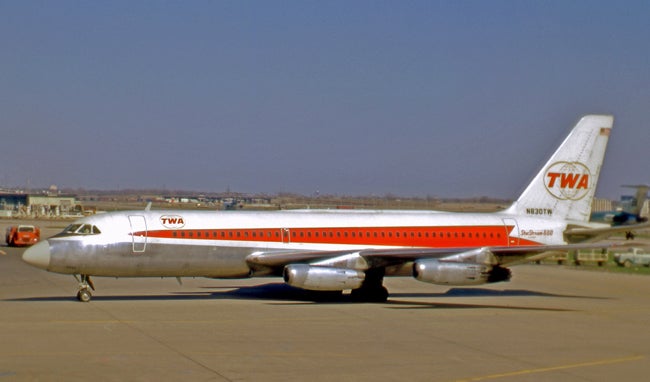
January 27, 1959 – The first flight of the Convair 880.
It’s never good to be late to a party, especially in the commercial airline industry. Following WWII, the race was on to build jet-powered civilian airliners, and that race was initially won by the
!!!error: Indecipherable SUB-paragraph formatting!!!
, which took its maiden flight in 1949. But that plane was not without its teething problems, which led to a series of fatal accidents. Boeing was ready to fill the void in 1957 with their
!!!error: Indecipherable SUB-paragraph formatting!!!
/
!!!error: Indecipherable SUB-paragraph formatting!!!
, an airliner they developed from the
!!!error: Indecipherable SUB-paragraph formatting!!!
aerial refueling platform they designed for the US Air Force, an aircraft whose design set the standard for all airliners of the future. Then Douglas came along a year later with their four-engine
!!!error: Indecipherable SUB-paragraph formatting!!!
. But last, and unfortunately least, was the Convair 880. When you’re trying to break into an established market, you have to do something that none of your competitors can do, or offer features the other companies don’t have. So Convair, already well known for their supersonic
!!!error: Indecipherable SUB-paragraph formatting!!!
strategic bomber, decided that their edge would be in the speed department. Though the 880 was smaller than the 707, and carried fewer passengers, it was about 40 mph faster than its rival. Convair hoped that the speed advantage would prove appealing to airline customers, especially in the early jet age when speed was everything, at least in military aviation. The designation 880 came from the advertised top speed of 880 ft/sec, and it was powered by four
!!!error: Indecipherable SUB-paragraph formatting!!!
turbojets, the civilian version of the J79 engine that powered the B-58, the
!!!error: Indecipherable SUB-paragraph formatting!!!
and the
!!!error: Indecipherable SUB-paragraph formatting!!!
. However, the niche market for smaller and faster jets never materialized, and Convair faced some stiff competition. They could not compete with Boeing on cost, because so much of the development expense of the 707 had already been spent in development of the KC-135 aerial tanker. The narrower fuselage of the 880 meant only five-abreast seating where the 707 could accommodate six abreast. And in the vital area of fuel economy, Convair’s CJ805 turbojets were much thirstier than Boeing’s
!!!error: Indecipherable SUB-paragraph formatting!!!
, so operating costs for the 880 were higher. After only three years, Convair halted production of the 880 after building just 65 aircraft. In an attempt to answer some of the problems facing the 880, particularly in passenger load, Convair stretched the 880 to create the
!!!error: Indecipherable SUB-paragraph formatting!!!
, lengthening it by 10 feet and adding space for about 10 more passengers. But only 37 990s were built. By 1975, the last 880 was withdrawn by the major air carriers, and only 9 aircraft exist today, none of them airworthy. Perhaps the most famous Convair 880 is the one purchased by Elvis Presley in 1975, which was preserved at his Memphis, Tennessee mansion after his death. Elvis’ plane was
!!!error: Indecipherable SUB-paragraph formatting!!!
in 2015, along with his Lockheed JetStar, and the buyer of both aircraft will be announced in March 2016.
(Photo by RushAS via
!!!error: Indecipherable SUB-paragraph formatting!!!
)
!!! UNKNOWN CONTENT TYPE !!!
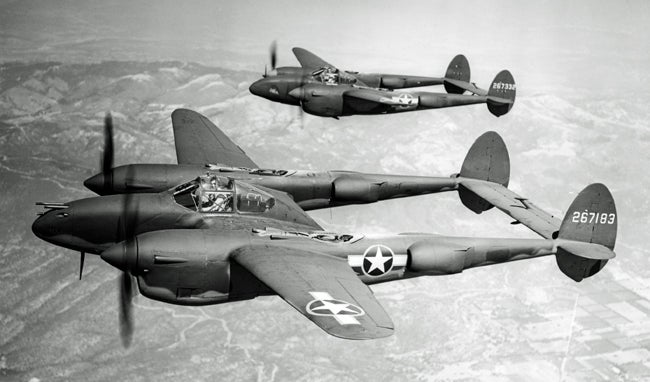
January 27, 1039 – The first flight of the Lockheed P-38 Lightning. Lockheed . It’s a name that has become synonymous with cutting edge development in air and space technology, and you can trace the name of one man throughout much of that company’s storied history: !!!error: Indecipherable SUB-paragraph formatting!!! . But the brilliant engineer who oversaw the development of the !!!error: Indecipherable SUB-paragraph formatting!!! and the !!!error: Indecipherable SUB-paragraph formatting!!! in the 1950s and 1960s made his first mark on aviation history with another innovative design, an aircraft which would become one of the greatest and most versatile fighters of WWII. Before the advent of the Lightning, American fighter design had changed little since the earliest all-metal monoplane designs. But Johnston’s P-38 would be twice as big, almost twice as powerful, and have twice the firepower of any other fighter of its day. But it was also extremely maneuverable for its size. The Lightning arose from a request that was designed to circumvent stringent Army Air Corps guidelines for pursuit aircraft that limited them to a single engine and no more than 500 pounds of armaments, including ammunition. To get around those restrictions, the request called specifically for an interceptor (not a fighter) that would have a minimum of 1,000 pounds of armament, excellent high-altitude performance, a maximum speed of at least 360 mph and the ability to climb to 20,000 ft in just six minutes. Kelly Johnson, working under Lockheed engineer !!!error: Indecipherable SUB-paragraph formatting!!! , considered many different configurations for their twin-engine aircraft, including a push-pull arrangment similar to the !!!error: Indecipherable SUB-paragraph formatting!!! , before settling on a twin boom design. The booms would house the engines, turbo-superchagers and tail, while the pilot and weapons would be housed in a central, egg-shaped nacelle. Machine guns and cannons fitted in the nose removed the requirement for synchronized guns firing through the propeller. Other design innovations included a tricycle landing gear, counter-rotating propellers, extensive use of stainless steel construction and flush-riveted aluminum panels. The design was indeed radical, but the Army found exactly what it was looking for in the Lightning, and it became the first American fighter to exceed 400 mph. Lockheed had developed the P-38 in secret, using $600,000 of its own money to build it, but the Army was so thrilled with the new fighter that they unveiled it in 1939 in an attempt at a transcontinental speed record. And even though the attempt ended in the crash of the prototype, the Army ordered 13 YP-38 prototypes. The first production aircraft were sent to Alaska in 1942, where their excellent range made them ideal for the long distances they needed to cover over the Pacific. Many Lightnings also operated in the European theater, but it was in the Pacific that the Lightning really found its home. As in Alaska, the P-38's excellent range made it ideal for long overwater flights, and pilots appreciated the added safety of a second engine. In battle, the Lightning was responsible for shooting down more Japanese aircraft than any other Army fighter, and it was a P-38 pilot who was credited with !!!error: Indecipherable SUB-paragraph formatting!!! Japanese general !!!error: Indecipherable SUB-paragraph formatting!!! , the mastermind of the Pearl Harbor attack. And America’s greatest WWII ace, !!!error: Indecipherable SUB-paragraph formatting!!! , ended the war with 40 victories, all while flying a P-38. In all, over 10,000 Lightnings were built, and it was the only US fighter to remain in production throughout the war. (US Army photo)
!!! UNKNOWN CONTENT TYPE !!!
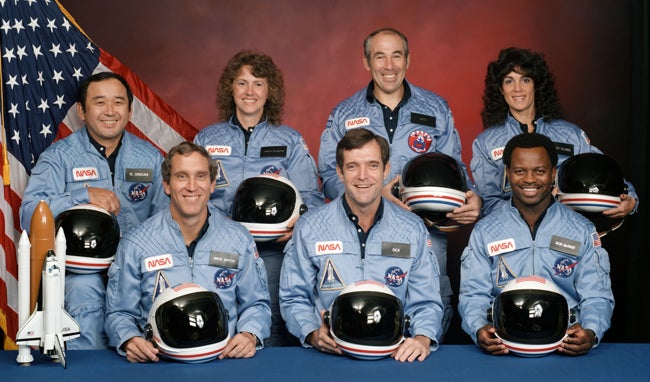
January 28, 1986 – The loss of Space Shuttle
Challenger
.
When the Space Shuttle
Challenger
lifted of from Kennedy Space Center that cold January morning in 1986, all eyes looked heavenward to watch Payload Specialist Christa McAuliffe as she hoped to become America’s first teacher in space. But just seventy-three seconds later, a leak from one of the Shuttle’s
!!!error: Indecipherable SUB-paragraph formatting!!!
(SRBs) ignited the liquid hydrogen and liquid oxygen in the Shuttle’s
!!!error: Indecipherable SUB-paragraph formatting!!!
, leading to a catastrophic explosion that destroyed the orbiter and caused the death of the entire crew of seven astronauts. Along with McAuliffe,
Challenger
carried Shuttle commander Francis Scobee, pilot Michael Smith, and mission specialists Ronald McNair, Ellison Onizuka, Judith Resnik and Gregory Jarvis. Following the explosion, an exhaustive investigation was carried out by the Presidential Commission on the Space Shuttle
Challenger
Accident, also known as the Rogers Commission after its chairman, William P. Rogers. The commission members represented a broad range of disciplines, and included former astronauts and pilots, as well as noted physicist
!!!error: Indecipherable SUB-paragraph formatting!!!
, and they determined that the accident was caused by a failure of the O-rings that joined sections of the solid rocket boosters together. The SRBs and the O-rings had been designed and built by Morton Thiokol, and it was known that their ability to contain the hot gases from the SRBs could be compromised by cold weather. The temperature during the night before the launch had dipped to 18ºF, well below the 40ºF temperature the O-rings had been certified for. In fact, icicles had formed on the launch tower the morning of the launch. But the commission found that even though NASA and Morton Thiokol knew about the flawed design, and the susceptibility to cold, they determined it to be an acceptable risk and the flight was allowed to take place. Feynman was particularly scathing about the poor risk assessment undertaken by NASA, saying that NASA’s belief in the Shuttle’s reliability was wildly unrealistic. But the real bombshell for the families of the astronauts, and the nation, was the disclosure that the crew had very likely survived the initial explosion, only to perish when the reinforced crew capsule struck the water at a force of 200g roughly three minutes after the explosion. The crew capsule was recovered from the waters off Cape Canaveral with the bodies of the crew still inside. Four of the astronauts had activated their Personal Egress Air Packs (PEAP) which provide them with a source of oxygen should they need to evacuate the Shuttle. But Shuttle designers had never allowed for any sort of emergency egress once the spacecraft had taken off; there are no ejection seats on the Shuttle. Following the disaster, Shuttle flights were suspended for 32 months while NASA and Morton Thiokol worked to completely redesign the Shuttle’s SRBs. Based on the findings of the Rogers Commission, NASA also created the Office of Safety, Reliability and Quality Assurance to address shortcomings in Shuttle program and allow for more oversight of launch procedures. Another of the commission’s finding was that the pressure to do as many launches as possible was unrealistic and may have led to shortcuts in safety. Shuttle missions eventually resumed with the launch of Shuttle
!!!error: Indecipherable SUB-paragraph formatting!!!
on September 29, 1988. Unfortunately, the Shuttle program would suffer the loss of another crew on February 1, 2003 when the Shuttle
!!!error: Indecipherable SUB-paragraph formatting!!!
!!!error: Indecipherable SUB-paragraph formatting!!!
while re-entering the atmosphere. Despite these tragedies, the Shuttle program would ultimately complete 133 successful missions before it was shuttered in 2011 following the final flight of the Shuttle
!!!error: Indecipherable SUB-paragraph formatting!!!
.
(NASA photo)
!!! UNKNOWN CONTENT TYPE !!!
Short Take Off
!!! UNKNOWN CONTENT TYPE !!!
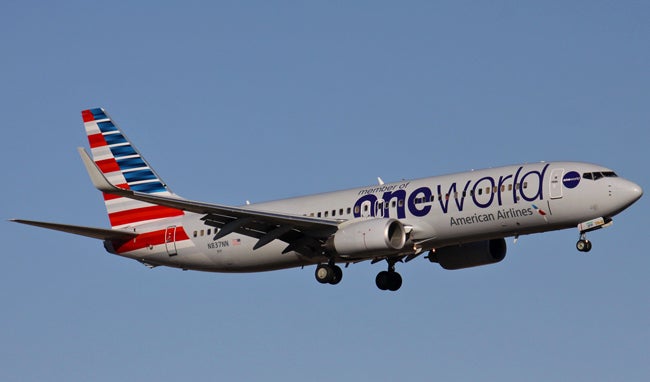
January 27, 2002 – The Boeing 737 becomes the first jetliner in history to amass more than 100 million flying hours.
Boeing delivered its first production 737-100 to Lufthansa on December 28, 1967 in a ceremony at Boeing Field in Seattle, and by 1987 it had become the most-ordered jetliner in commercial history. In 2012, the 737 became the first commercial airliner to surpass 10,000 orders and, as of 2014, Boeing was building forty-two 737s a month at their factory in Washington, with plans to increase production to fifty-two per month by 2018. With constant upgrades and modernization, the 737 has remained in production and been manufactured continuously since 1967, with almost 8,900 produced to date.
(Photo by the author)
!!! UNKNOWN CONTENT TYPE !!!
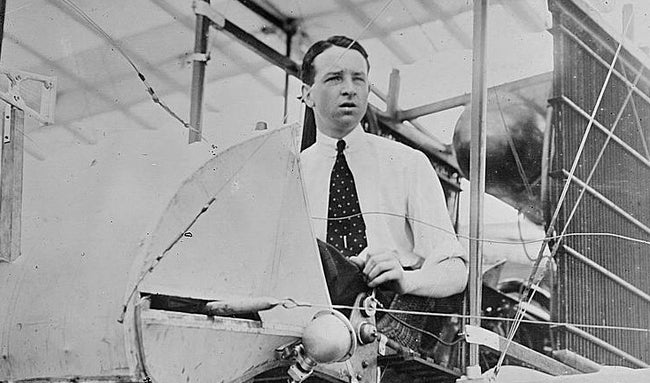
January 27, 1989 – The death of Thomas Sopwith. Born on January 18, 1888 in Kensington, London, Sopwith was an early aviation pioneer who is perhaps best known for the design of the !!!error: Indecipherable SUB-paragraph formatting!!! , one of the dominant fighter aircraft of WWI. Sopwith first became interested in aviation when he witnessed !!!error: Indecipherable SUB-paragraph formatting!!! fly passengers across the English Channel in 1910, and soon learned to fly himself. With Fred Sigrist, Sopwith created the !!!error: Indecipherable SUB-paragraph formatting!!! in 1912 and produced more than 18,000 aircraft for Britain during WWI, including 5,747 Sopwith Camels. For his efforts, Sopwith was awarded the !!!error: Indecipherable SUB-paragraph formatting!!! in 1918. Sopwith Aviation went bankrupt following the war, so Sopwith started a new company with his chief test pilot !!!error: Indecipherable SUB-paragraph formatting!!! , and Sopwith became chairman of !!!error: Indecipherable SUB-paragraph formatting!!! . Following the nationalization of the aircraft industry, Hawker Aircraft became !!!error: Indecipherable SUB-paragraph formatting!!! , and Sopwith stayed with the company as a consultant until 1980. ( US Library of Congress photo)
!!! UNKNOWN CONTENT TYPE !!!
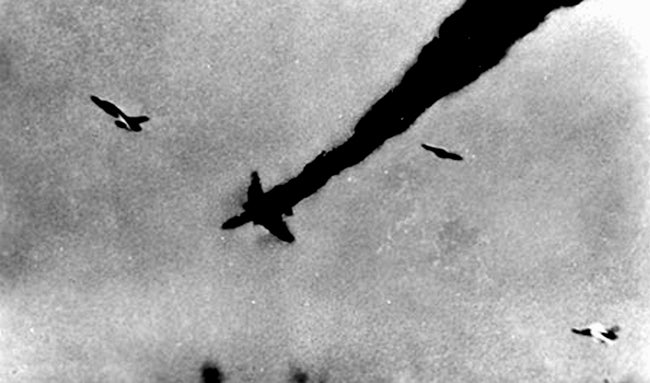
January 27, – A ceasefire agreement between the United States, North Vietnam, and South Vietnam ends US participation in the Vietnam War.
By the end of the Vietnam War, the US Air Force had flown 5.25 million sorties over Southeast Asia, losing 2,251 aircraft. Of that number, 1,737 were lost to hostile action. The 21 aircraft carriers of the US Navy conducted 86 war cruises, losing 859 aircraft, with just over a third of those being operational losses. The Marine Corps lost a total of 463 fixed and rotary wing aircraft, while the US Army lost over 5,000 helicopters. The vast majority of all aircraft were shot down by anti-aircraft artillery (AAA). Approximately 6,600 pilots of all branches were killed. The last American fixed wing aircraft lost was CDR Harly Hall, a Navy F-4 Phantom II pilot who was shot down over the Demilitarized Zone on January 27, 1972. The last rotary-wing pilot lost was 2LT Richard Vandegeer, who crashed during the
!!!error: Indecipherable SUB-paragraph formatting!!!
on May 15, 1975.
(Photo via
!!!error: Indecipherable SUB-paragraph formatting!!!
)
!!! UNKNOWN CONTENT TYPE !!!
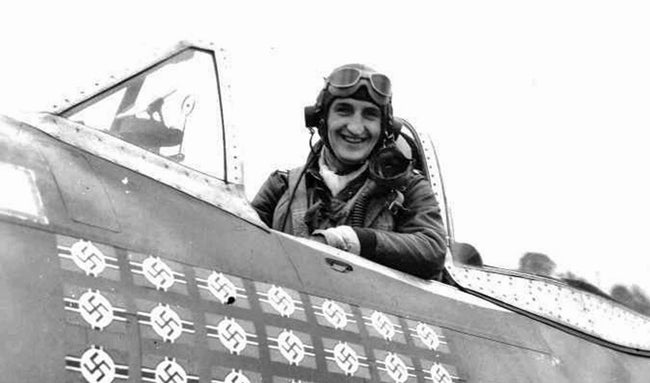
January 28, 1919 – The birth of Francis “Gabby” Gabreski.
Born Franciszek Gabryszewski, Gabreski served in the US Air Force for 26 years, retiring with the rank of colonel. Gabreski was the top scoring American ace in Europe in WWII, where he flew the
!!!error: Indecipherable SUB-paragraph formatting!!!
and recorded 28 victories before ending the war as a German POW. After WWII, Gabreski served in Korea, where he scored 6.5 kills flying a
!!!error: Indecipherable SUB-paragraph formatting!!!
, bringing his all-time total to 34.5 and making him one of seven US pilots to become an ace in both wars. After Korea, Gabreski served 15 more years in the USAF and commanded three different fighter wings. When he retired in 1967, Gabreski had logged more than 5,000 hours in the air, with 4,000 of those flying jets.
(US Army photo)
!!! UNKNOWN CONTENT TYPE !!!
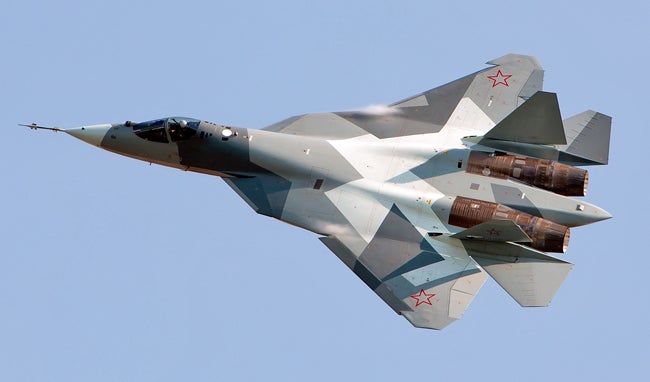
January 29, 2010 – The first flight of the Sukhoi PAK FA, a !!!error: Indecipherable SUB-paragraph formatting!!! under development by Sukhoi as part of the Perspektivny Aviatsionny Kompleks Frontovoy Aviatsii program to develop a new, high-technology fighter for Russian Frontal Aviation. The successor to the !!!error: Indecipherable SUB-paragraph formatting!!! and !!!error: Indecipherable SUB-paragraph formatting!!! , the prototype is known as the T-50 and is the first operational Russian fighter to employ stealth technology. The T-50 will be used in both the air superiority and ground attack roles and, like the !!!error: Indecipherable SUB-paragraph formatting!!! , its closest Western competition, the T-50 will feature !!!error: Indecipherable SUB-paragraph formatting!!! and !!!error: Indecipherable SUB-paragraph formatting!!! . Five prototypes have been built to date, and the T-50 is expected to enter service with the Russian Air Force and Navy in late 2016 or early 2017. (Photo by Alex Beltyukov via !!!error: Indecipherable SUB-paragraph formatting!!! )
!!! UNKNOWN CONTENT TYPE !!!

January 29, 1973 – Frontier Airlines hires Emily Howell Warner, the first woman to command a passenger airliner. Though not the first woman to fly as a commercial pilot, Warner was the only woman working as a pilot for a major airline when she was hired by !!!error: Indecipherable SUB-paragraph formatting!!! in 1973. Within six months of her hire, Warner was promoted to First Officer, and in 1974 she became the first female member of the Air Line Pilots Association (ALPA). In 1976, Warner became the first woman captain, flying a !!!error: Indecipherable SUB-paragraph formatting!!! . Warner was also the first woman to command an all-female crew. When Frontier went out of business in 1986, Warner went to work as captain of a UPS !!!error: Indecipherable SUB-paragraph formatting!!! , and also flew the !!!error: Indecipherable SUB-paragraph formatting!!! , and in 1990, she left UPS to work for the Federal Aviation Administration. Warner was elected to the !!!error: Indecipherable SUB-paragraph formatting!!! in 2014. (Photo via National Air and Space Museum Archives)
!!! UNKNOWN CONTENT TYPE !!!
!!! UNKNOWN HEADER TYPE (MULTI-LINE BREAK?) !!!
!!! UNKNOWN CONTENT TYPE !!!
!!! UNKNOWN CONTENT TYPE !!!
!!! UNKNOWN CONTENT TYPE !!!
!!! UNKNOWN CONTENT TYPE !!!
If you enjoy these Aviation History posts, please let me know in the comments. And if you missed any of the past articles, you can find them all at
!!!error: Indecipherable SUB-paragraph formatting!!!
.
!!! UNKNOWN CONTENT TYPE !!!
 Smallbear wants a modern Syclone, local Maple Leafs spammer
> ttyymmnn
Smallbear wants a modern Syclone, local Maple Leafs spammer
> ttyymmnn
01/29/2016 at 12:43 |
|
I heard they were actually warned about fire in the Appolo 1. Someone checked out the wiring and it was pretty terrible, especially when using pure oxygen.
It was a fire waiting to happen. That stopped waiting.
 MonkeePuzzle
> ttyymmnn
MonkeePuzzle
> ttyymmnn
01/29/2016 at 12:59 |
|
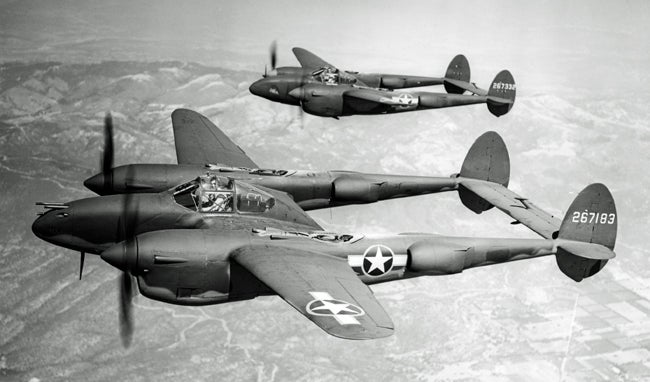
phoar! drool! if one v12 is good, 2 MUST be better!
 MonkeePuzzle
> MonkeePuzzle
MonkeePuzzle
> MonkeePuzzle
01/29/2016 at 13:00 |
|
engage drool mode
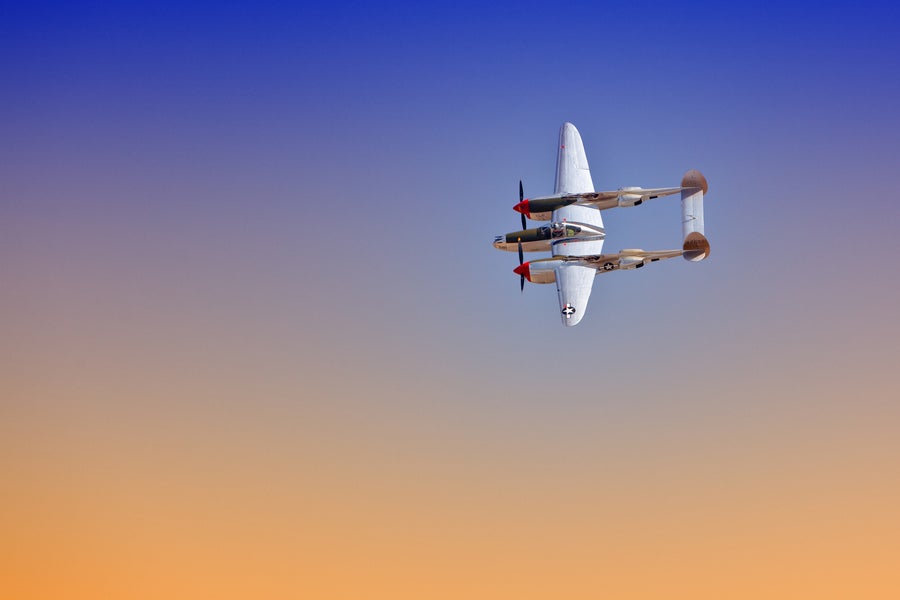

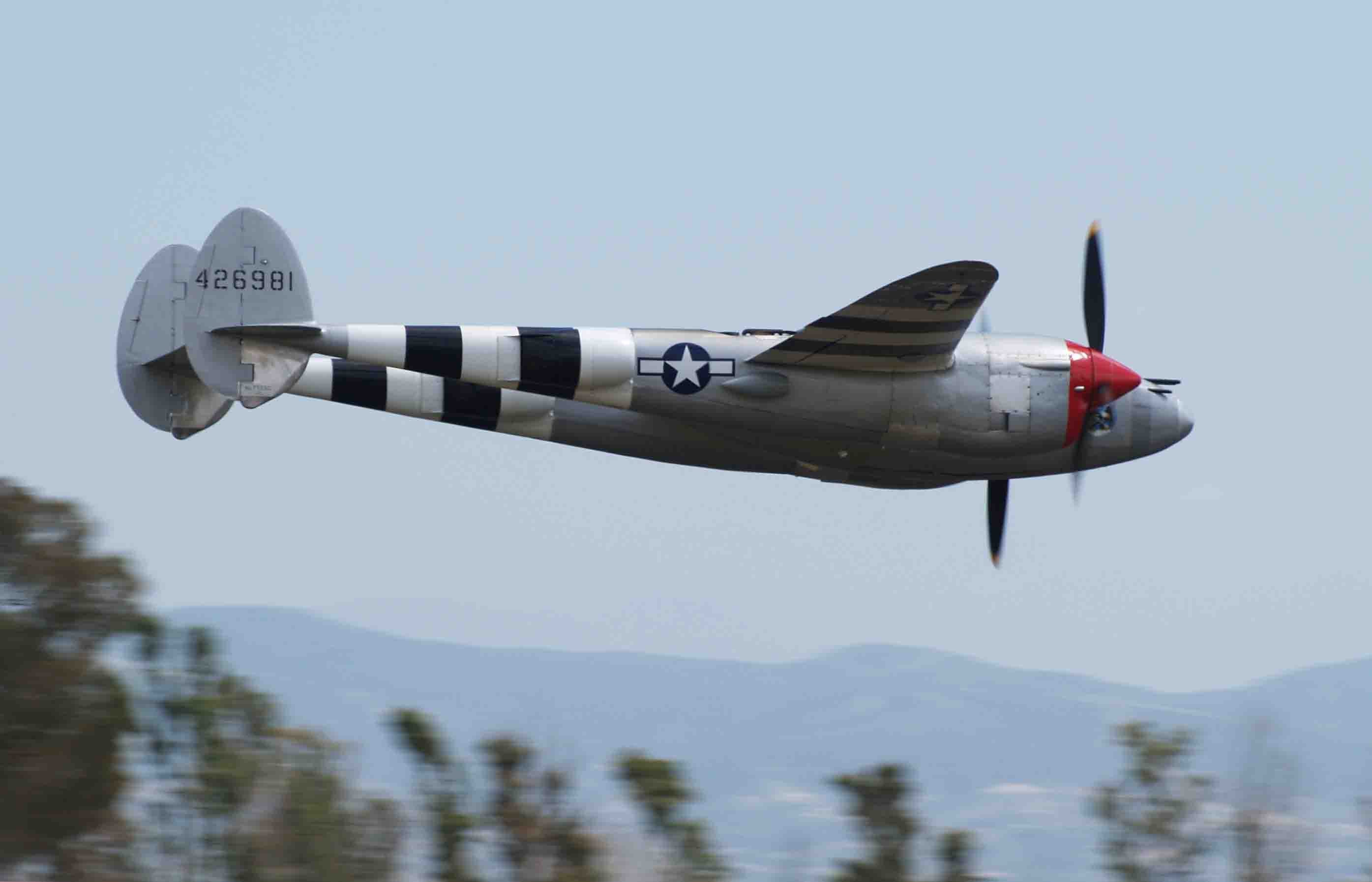
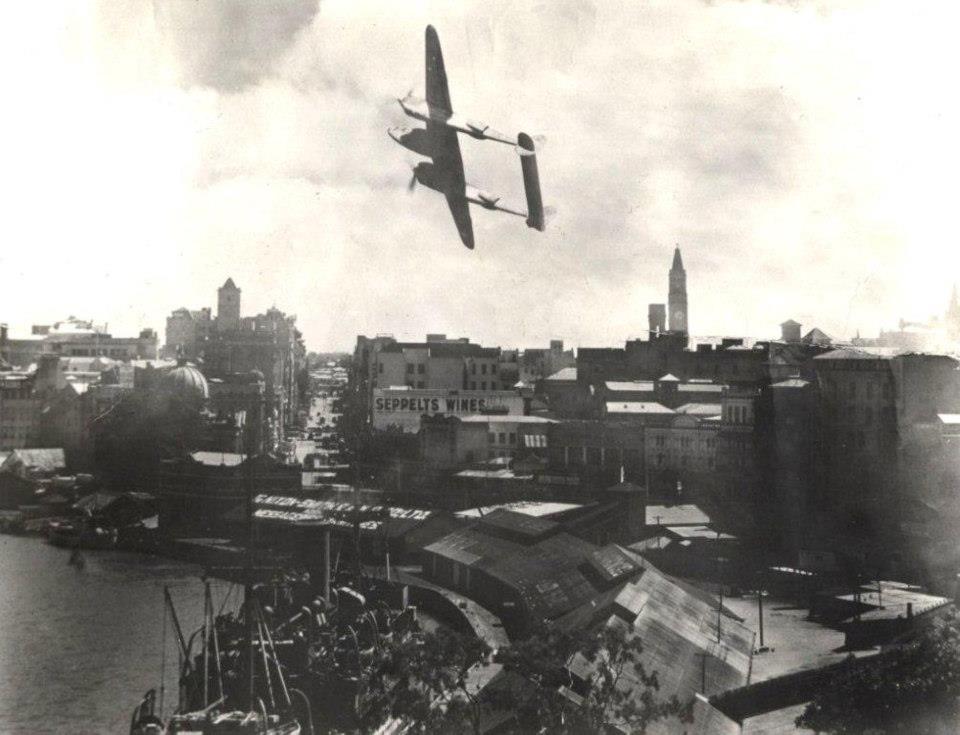
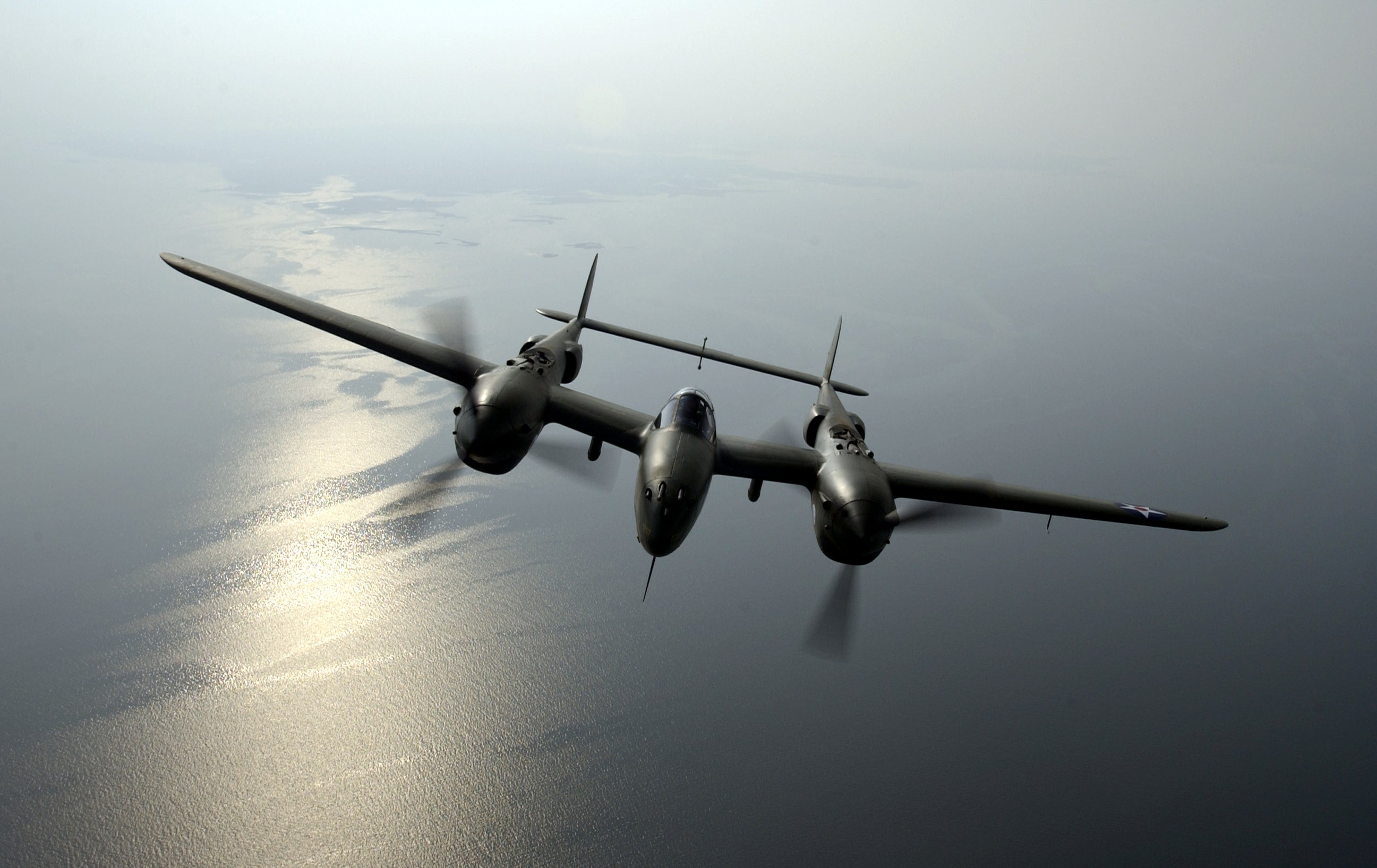
 uofime-2
> ttyymmnn
uofime-2
> ttyymmnn
01/29/2016 at 15:52 |
|
How were they really using pure oxygen, I was of the understanding that it is poisonous to breathe pure oxygen.
 ttyymmnn
> uofime-2
ttyymmnn
> uofime-2
01/29/2016 at 16:18 |
|
Pure oxygen isn't poisonous per se, but if you breathe pure O2 for too long, the body loses its drive to breathe on its own. That's why hospitals only use elevated levels of O2 for short periods. The pure O2 was used only during ascent and descent so the astronauts wouldn't get the bends. That's why SR-71 pilots breathe pure O2 during their high altitude missions.